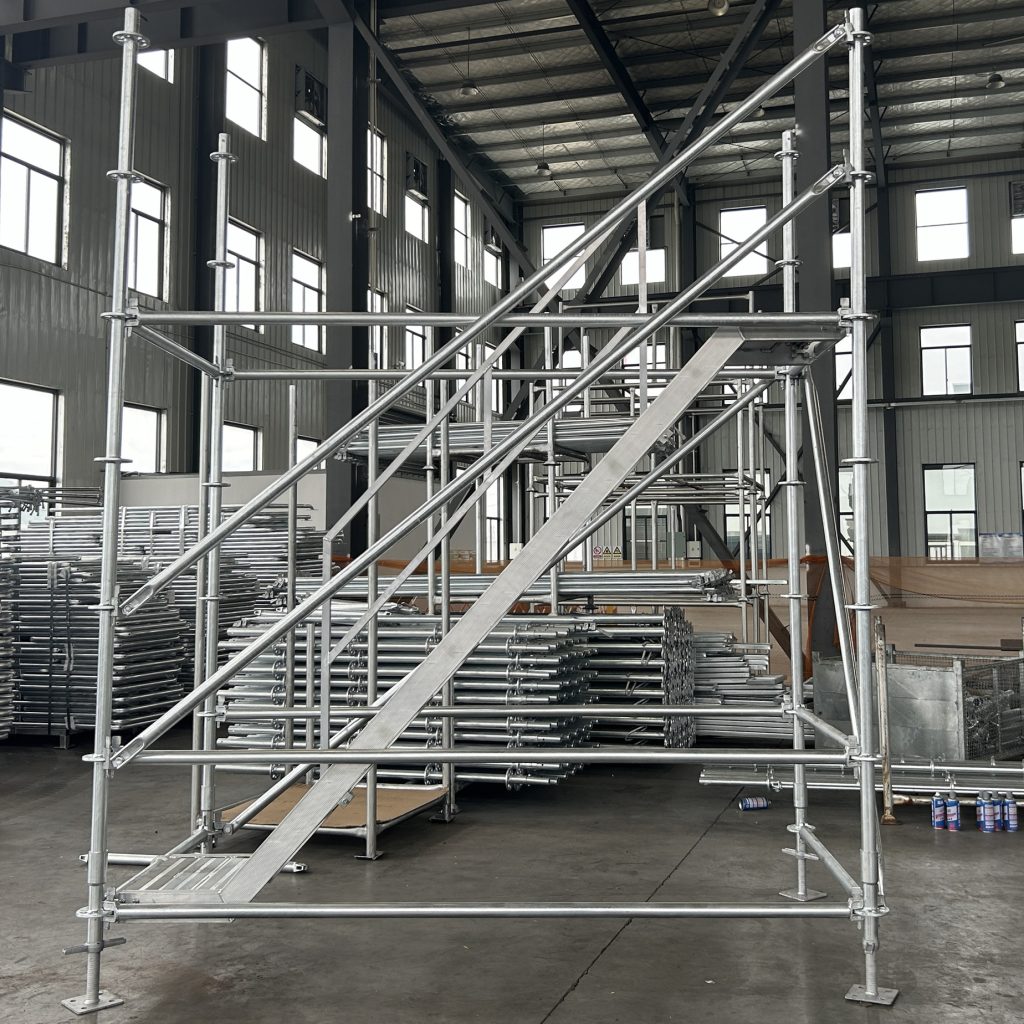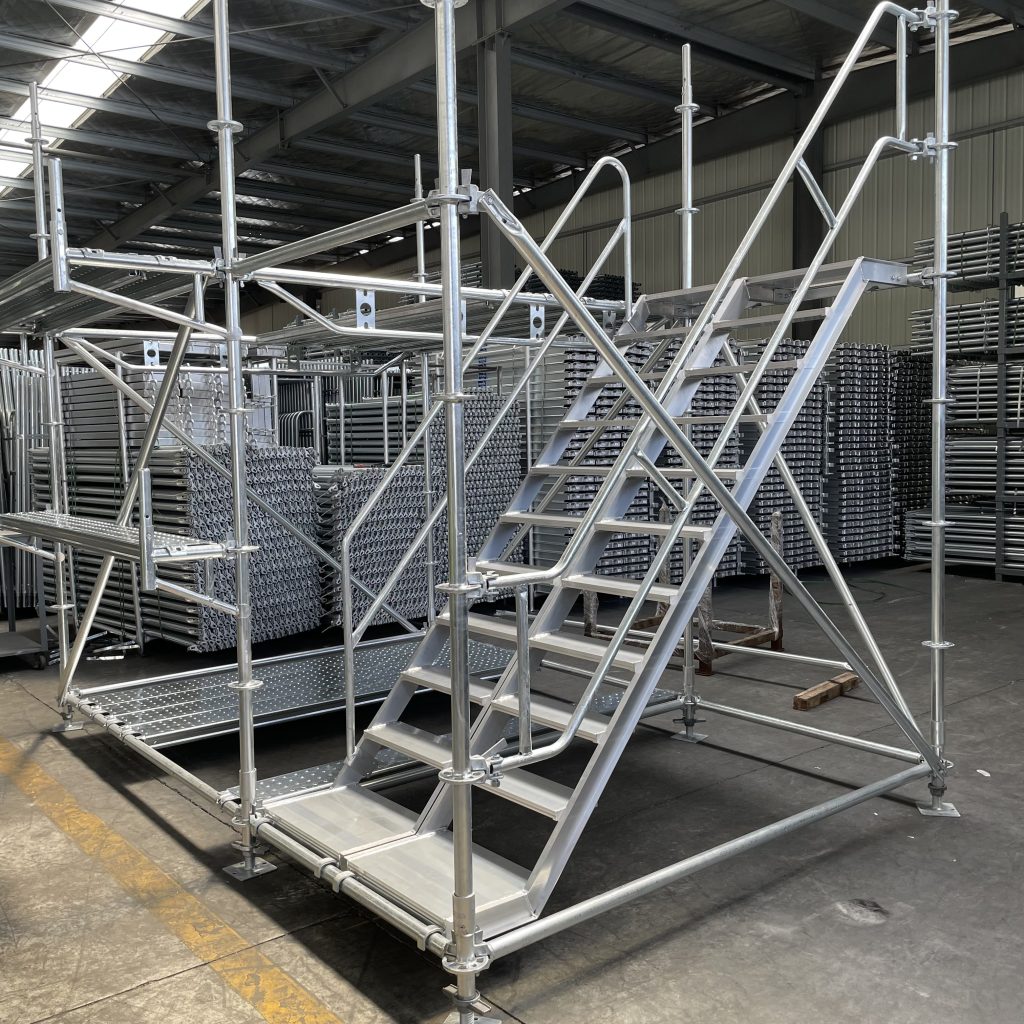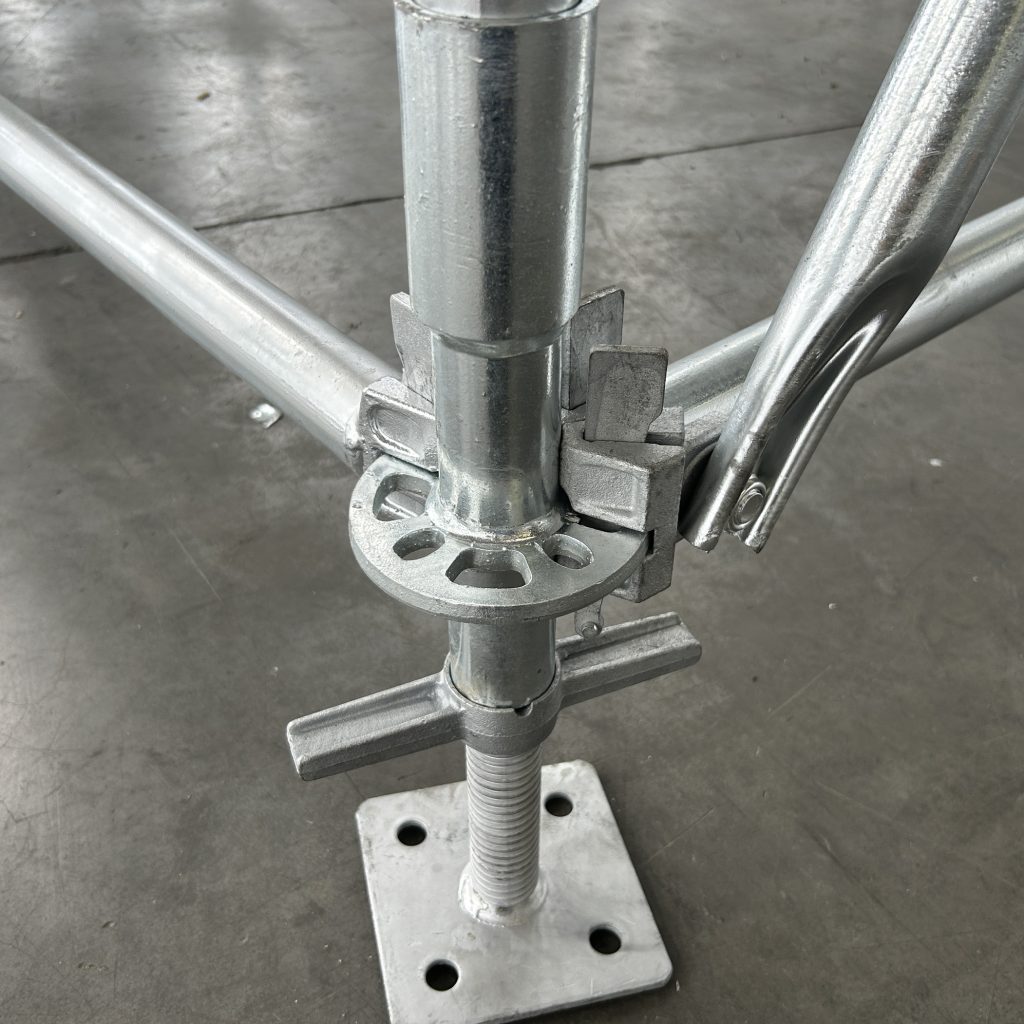Table of Contents
Factors Affecting The Stability of Scaffolding System
The safety of scaffolding systems depends on a variety of environmental and operational factors
- Uneven Ground: Uneven ground may cause tilting or shifting.
- Bad Weather: Strong winds and snowy weather can make the ground slippery and increase the risk of tipping.
- Uniform Loading: Uneven weight loading can also undermine the stability of the base jack support.
- Daily Inspection: Daily inspection and preventive adjustments of the scaffolding system are essential. This includes checking the supports, joints, and platform fixtures before use.
- Building rules: The installation of scaffolding systems needs to meet the 3-to-1 rule.

What Is The 3-To-1 Rule For Scaffolding Systems?
The 3-to-1 rule for scaffolding refers to the ratio of the height of the scaffolding system to the width of the base. That is, for every three feet of increase in the scaffolding height, the base width must increase by at least one foot. This ratio helps prevent the scaffolding from tipping over and ensures that the scaffolding structure is balanced. The 3-to-1 rule is an important safety guideline that must be followed when building a scaffolding system to prevent accidents and injuries. However, the type of scaffolding, the weight of the material and workers, wind speed, and other factors of each scaffold will affect the stability of the scaffolding structure. For specific safety requirements, you can consult a professional scaffolding worker.

Why Is The 3-To-1 Rule So Important?
This rule can prevent the collapse of independent scaffolding systems. Failure to comply with safety regulations may cause workers to fall. If the scaffolding system exceeds a 3:1 ratio, it must be fixed with supports, tie rods, or other stabilization methods. The 3-to-1 rule provides a safety margin that allows the scaffolding structure to withstand slight weight changes or external forces without affecting its stability.

Which Scaffolding System Need To Apply The 3-To-1 Rule?
The 3-to-1 rule mainly applies to freestanding scaffolding systems, which rely on the base jack width for stability and do not require connection or support to the structure. There are many types of freestanding scaffolding, including frame scaffolding, ringlock scaffolding, cuplock scaffolding, kwikstage scaffolding and coupler scaffolding.
Conclusion
Freestanding scaffolding systems need to comply with the 3-to-1 rule and consider other factors that affect stability to ensure the stability of the scaffolding system and the safety of workers. In addition, consulting professional construction personnel can also effectively reduce the risk of the project.
